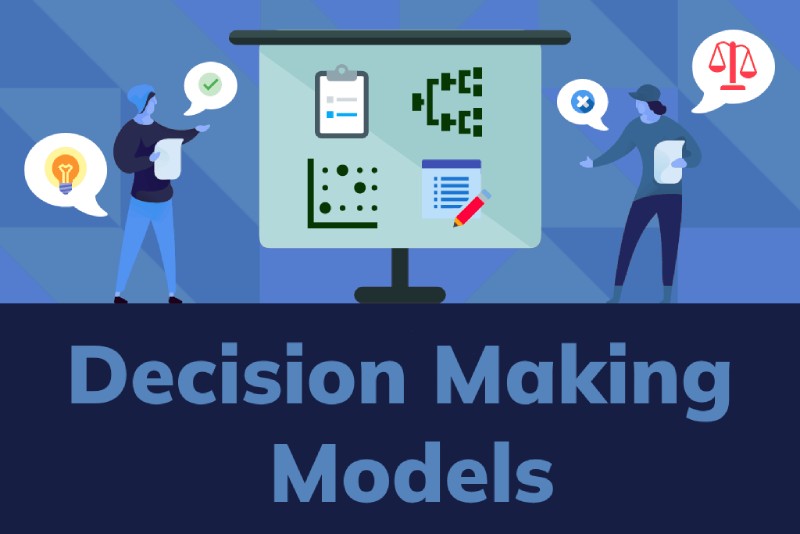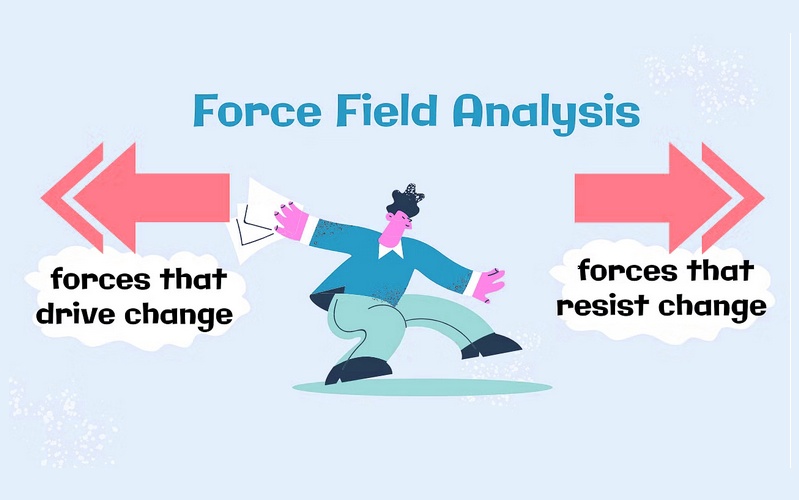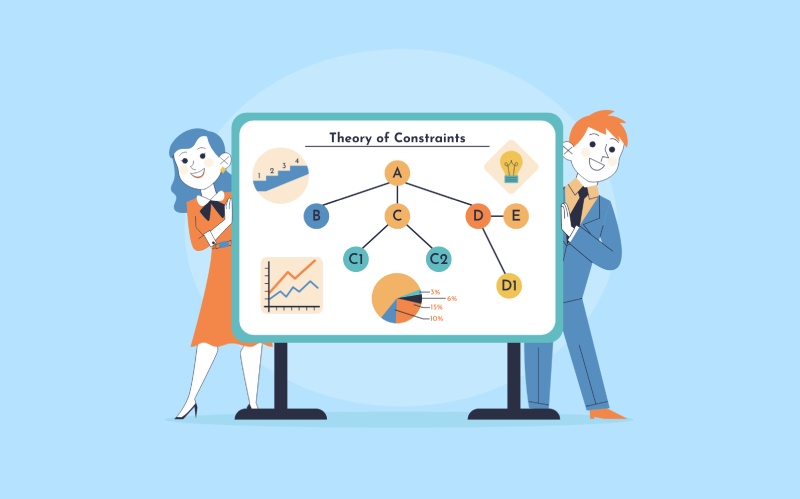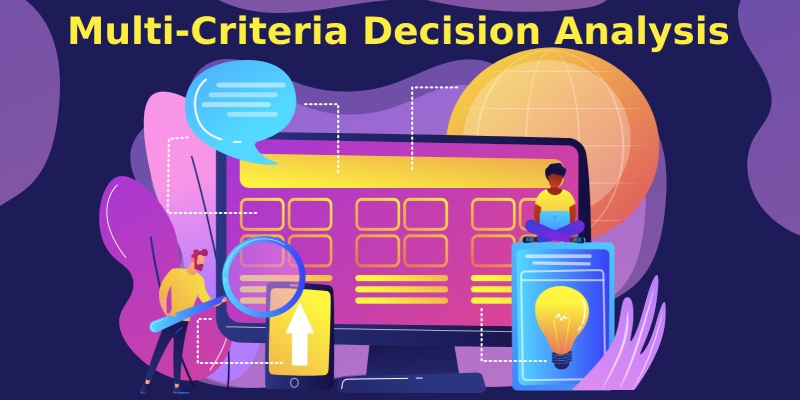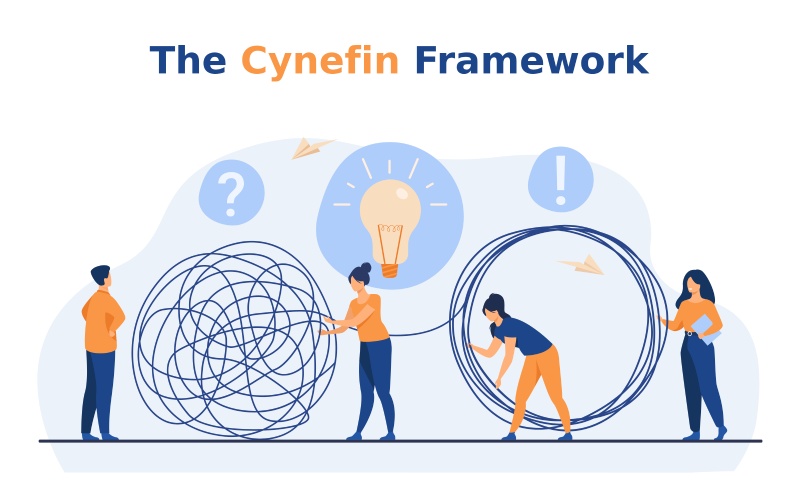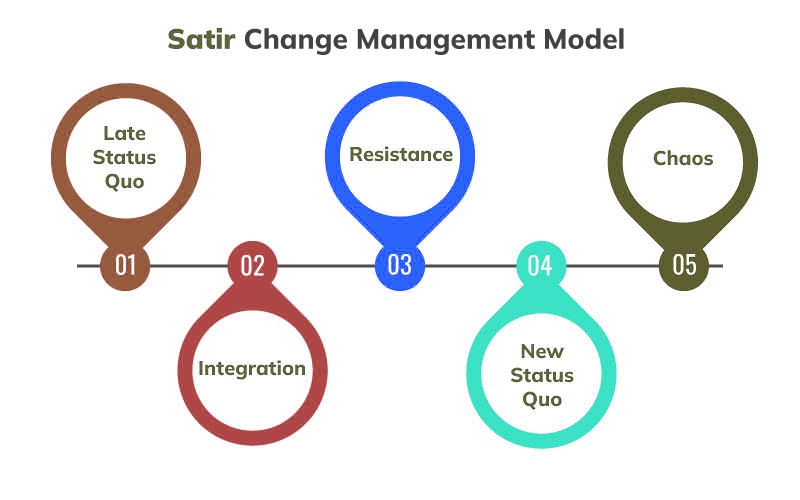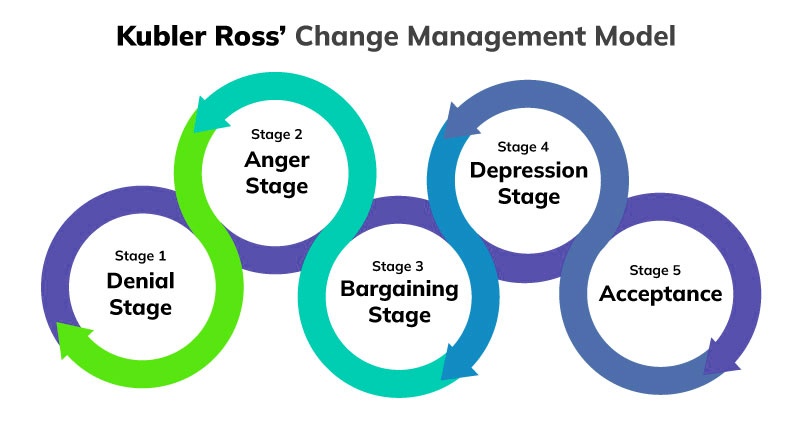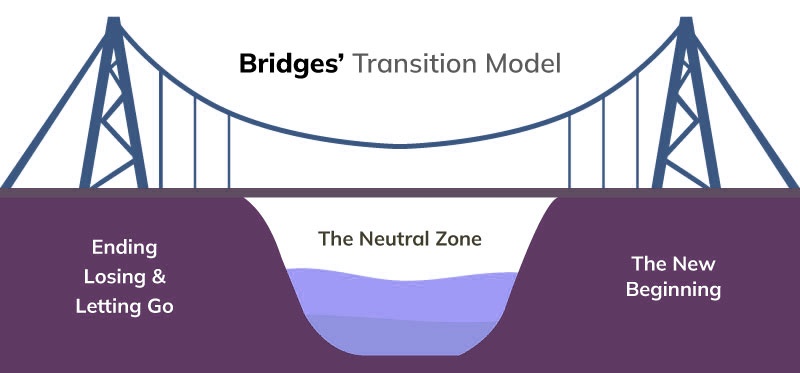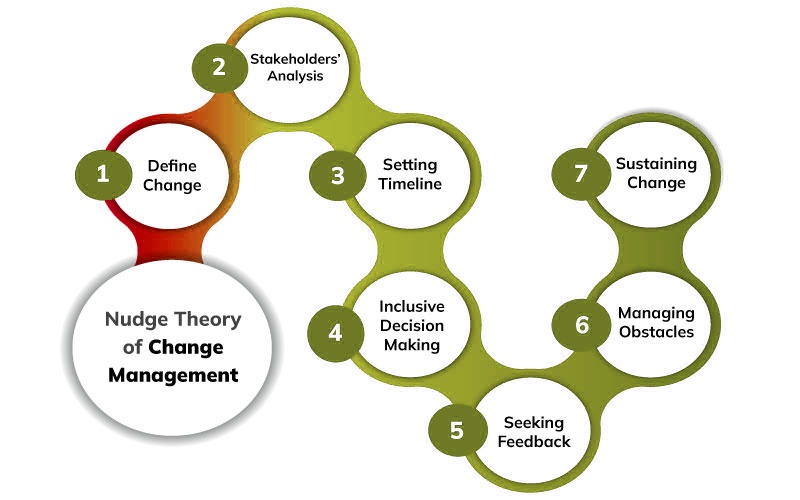Overiew
In every aspect of life, individuals and organizations are faced with a multitude of decisions, ranging from the mundane to the critical. The process of decision-making involves selecting a course of action from several alternatives to achieve a desired outcome. However, this process can be complex and challenging, often influenced by various factors such as time constraints, uncertainty, and conflicting objectives. Decision-making models provide structured frameworks to help individuals and groups navigate through this complexity, ensuring that decisions are made effectively and efficiently. These models are invaluable tools that draw upon theories from psychology, economics, management, and other disciplines to provide a systematic approach to decision-making.
Decision-making models serve as roadmaps, guiding individuals and organizations through the steps of identifying, analyzing, and selecting the best course of action. By breaking down the decision-making process into manageable components, these models enable decision-makers to clarify objectives, gather relevant information, evaluate alternatives, and assess potential risks. Moreover, decision-making models help mitigate cognitive biases and subjective judgments that can often lead to suboptimal outcomes. Whether in personal or professional contexts, mastering decision-making models equips individuals with the skills necessary to make informed choices and achieve desired results.
With this comprehensive guide, we delve into various decision-making models, exploring their principles, applications, strengths, and limitations. From classical models like the Rational Decision-Making Model to contemporary approaches such as Behavioral Decision Theory, we examine the diverse methodologies available to guide decision-makers in different contexts. Whether you're a business leader faced with strategic dilemmas, a policymaker navigating complex societal issues, or an individual making personal choices, understanding and applying these decision-making models can enhance your ability to make sound decisions in an increasingly uncertain world.
Let’s Explore the Most Important Decision-Making Models:
1. Rational Decision-Making Model
The rational decision-making model is a systematic, step-by-step approach to decision-making. It assumes that individuals will make logical choices by evaluating all available alternatives and selecting the one that maximizes their objectives. The steps involved in this model typically include:
- Identify the Problem: Clearly define the decision to be made and the objectives to be achieved.
- Gather Information: Collect relevant data and information related to the problem.
- Identify Alternatives: Generate possible solutions or courses of action.
- Evaluate Alternatives: Assess each alternative based on predetermined criteria or factors.
- Make a Decision: Select the alternative that best meets the objectives.
- Implement the Decision: Put the chosen alternative into action.
- Evaluate the Decision: Monitor outcomes and adjust if necessary.
2. Bounded Rationality Model
Bounded rationality recognizes that individuals have limited cognitive abilities and resources, which may constrain their ability to make fully rational decisions. In this model, decision-makers aim to make "good enough" choices rather than optimal ones. Key steps in bounded rationality include:
- Satisfice: Instead of evaluating all possible alternatives, decision-makers settle for options that are satisfactory or "good enough."
- Use Heuristics: Employ mental shortcuts or rules of thumb to simplify decision-making.
- Consider Limited Information: Focus on relevant information and ignore details that may not significantly impact the decision.
- Recognize Constraints: Acknowledge and work within the constraints of time, resources, and cognitive abilities.
3. Intuitive Decision-Making Model
Intuitive decision-making relies on gut feelings, instincts, and tacit knowledge rather than extensive analysis. It is often used in situations where time is limited, and there is a high level of uncertainty. Key characteristics of intuitive decision-making include:
- Experience-Based: Drawing on past experiences and expertise to make rapid decisions.
- Pattern Recognition: Recognizing familiar patterns or cues to guide decision-making.
- Emotional Intelligence: Being aware of and effectively managing emotions that influence decision-making.
- Trust Intuition: Having confidence in one's instincts while remaining open to feedback and course correction.
4. Behavioral Decision-Making Model
The behavioral decision-making model integrates insights from psychology and economics to explain how individuals actually make decisions, considering cognitive biases and heuristics. Key principles of this model include:
- Cognitive Biases: Recognizing and mitigating biases such as confirmation bias, anchoring bias, and overconfidence.
- Prospect Theory: Understanding how individuals evaluate potential gains and losses, often deviating from rational utility maximization.
- Risk Perception: Considering subjective perceptions of risk and uncertainty, which may diverge from objective probabilities.
- Nudge Theory: Using subtle interventions to influence decision-making without restricting freedom of choice.
5. Collaborative Decision-Making Model
The collaborative decision-making model involves multiple stakeholders working together to reach a consensus or make a joint decision. This model is particularly relevant in organizational settings where diverse perspectives and expertise are valuable. Key elements of collaborative decision-making include:
- Stakeholder Involvement: Engaging all relevant parties in the decision-making process to ensure buy-in and legitimacy.
- Open Communication: Facilitating transparent communication and information sharing among participants.
- Conflict Resolution: Addressing conflicts and differences of opinion constructively to reach a mutually acceptable solution.
- Shared Responsibility: Promoting a sense of collective ownership and accountability for the decision and its outcomes.
6. Normative Decision Theory
Normative decision theory focuses on identifying the most rational decision in ideal conditions, regardless of whether individuals actually make decisions that way. It provides a benchmark for evaluating the quality of real-world decisions. Key components of normative decision theory include:
- Expected Utility Theory: Decision-makers assess the expected utility or value associated with each alternative and choose the one with the highest expected utility.
- Decision Trees: Visual representations that map out decision options, possible outcomes, and their probabilities, aiding in systematic decision analysis.
- Bayesian Decision Theory: Incorporates prior beliefs and updated probabilities to make decisions based on Bayesian inference principles.
- Utility Functions: Quantify preferences and values to facilitate comparison and ranking of decision alternatives.
- Risk Analysis: Assessing and managing uncertainties and risks associated with decision outcomes.
7. Incremental Decision-Making Model
The incremental decision-making model emphasizes making small, incremental changes or adjustments over time rather than implementing radical or wholesale changes. It is often used in situations where uncertainty is high, and outcomes are difficult to predict. Key features of incremental decision-making include:
- Trial and Error: Experimenting with small changes and learning from feedback and experience.
- Adaptive Learning: Adjusting strategies and tactics based on real-time information and evolving circumstances.
- Flexibility: Maintaining flexibility and agility to adapt to changing conditions and emerging opportunities or threats.
- Conservative Approach: Avoiding large-scale commitments or irreversible decisions until sufficient evidence and confidence are gained.
- Iterative Process: Repeating cycles of decision-making, implementation, and evaluation to refine and improve outcomes gradually.
8. Game Theory
Game theory analyzes strategic interactions among decision-makers who have conflicting interests or objectives. It provides insights into decision-making in competitive environments where the actions of one party affect the outcomes for others. Key concepts in game theory include:
- Payoff Matrix: A tool used to represent the possible outcomes of strategic interactions between decision-makers.
- Nash Equilibrium: A situation where no player can improve their outcome by unilaterally changing their strategy, given the strategies chosen by other players.
- Cooperative Games: Studying situations where players can form coalitions or alliances to achieve mutually beneficial outcomes.
- Zero-Sum Games: Games where the gains of one player are exactly balanced by the losses of other players, leading to direct competition.
- Mixed Strategies: Introducing randomness or unpredictability into decision-making to optimize outcomes in situations of uncertainty.
9. Garbage Can Model
The garbage can model views decision-making as a chaotic, non-linear process influenced by multiple factors, including problems, solutions, participants, and timing. It suggests that decisions are often made opportunistically, with solutions looking for problems to solve. Key elements of the garbage can model include:
- Problem Stream: Issues or opportunities arise independently of decision-making processes and may persist until addressed.
- Solution Stream: Potential solutions or alternatives emerge from various sources, often unrelated to specific problems.
- Participant Stream: Decision-makers and stakeholders bring diverse interests, priorities, and perspectives to the decision-making process.
- Choice Opportunities: Decision-making events occur intermittently, providing windows of opportunity for decisions to be made.
- Organizational Context: The organizational environment, structure, and culture influence how decisions are made and implemented.
10. Cynefin Framework
The Cynefin framework, developed by Dave Snowden, categorizes decision-making contexts into five domains: simple, complicated, complex, chaotic, and disorder. It helps decision-makers understand the nature of a problem or situation and select appropriate approaches for decision-making. Key features of the Cynefin framework include:
- Simple (Obvious) Domain: Clear cause-and-effect relationships exist, making decisions straightforward and best addressed with established best practices.
- Complicated Domain: Problems are analyzable but require expertise or technical knowledge to solve, necessitating expert analysis and consultation.
- Complex Domain: Problems are characterized by uncertainty and unpredictability, requiring experimentation, collaboration, and emergent solutions.
- Chaotic Domain: Situations are in flux, and immediate action is necessary to restore stability before transitioning to other domains.
- Disorder Domain: Uncertainty prevails, and it's unclear which domain the situation belongs to, indicating the need for sense-making and problem framing before proceeding with decision-making.
11. Delphi Method
The Delphi method is a structured, iterative approach used to gather and distill the knowledge and opinions of experts to make informed decisions, particularly in situations with high uncertainty or complexity. Key characteristics of the Delphi method include:
- Anonymity: Experts provide input anonymously, reducing the influence of personal biases and facilitating open communication.
- Iterative Process: Multiple rounds of surveys or questionnaires are conducted, allowing experts to revise their opinions based on feedback from previous rounds.
- Consensus Building: Through controlled feedback mechanisms, the method aims to converge towards a group consensus or convergence of expert opinions.
- Facilitated Communication: A facilitator coordinates the Delphi process, ensuring clarity of communication and guiding participants through each round.
- Forecasting and Decision Support: The method is often used for forecasting future trends, assessing risks, or making strategic decisions based on expert judgment.
12. Six Thinking Hats
Developed by Edward de Bono, the Six Thinking Hats model is a structured technique for parallel thinking and exploring different perspectives during decision-making and problem-solving. Each "hat" represents a different mode of thinking:
- White Hat (Facts): Focuses on gathering and analyzing data, information, and facts relevant to the decision.
- Red Hat (Emotions): Encourages participants to express their feelings, intuitions, and gut reactions without justification.
- Black Hat (Critical): Identifies potential risks, weaknesses, and drawbacks associated with each decision alternative.
- Yellow Hat (Positive): Considers the benefits, opportunities, and strengths associated with each decision alternative.
- Green Hat (Creativity): Stimulates creative thinking, brainstorming new ideas, and exploring innovative solutions.
- Blue Hat (Process): Manages the overall thinking process, setting agendas, facilitating discussions, and summarizing outcomes.
13. Vroom-Yetton Decision Model
The Vroom-Yetton decision model provides a systematic approach for determining the appropriate level of participative decision-making based on the nature of the decision and the characteristics of the situation. Key elements of the Vroom-Yetton model include:
- Decision Quality: Assessing the importance and complexity of the decision to determine the optimal level of decision quality required.
- Leader Information: Evaluating the leader's knowledge, expertise, and access to information relevant to the decision.
- Problem Structure: Analyzing the structure of the problem, including its clarity, certainty, and degree of conflict among stakeholders.
- Commitment Requirement: Considering the importance of gaining commitment and acceptance from relevant parties affected by the decision.
- Leader Preference: Incorporating the leader's preferred decision-making style, whether it be autocratic, consultative, or participative.
14. PESTLE Analysis
PESTLE analysis is a strategic tool used to evaluate and understand the external factors that may impact decision-making and organizational performance. The acronym stands for Political, Economic, Social, Technological, Legal, and Environmental factors. Key aspects of PESTLE analysis include:
- Political Factors: Assessing the influence of government policies, regulations, and political stability on decision-making and business operations.
- Economic Factors: Analyzing macroeconomic indicators, market trends, and economic conditions that may affect financial performance and investment decisions.
- Social Factors: Understanding societal trends, demographics, cultural norms, and consumer behavior that can impact product demand and market dynamics.
- Technological Factors: Evaluating advancements in technology, innovation, and digital transformation that may create opportunities or threats for the organization.
- Legal and Regulatory Factors: Considering legal frameworks, compliance requirements, and industry regulations that govern business activities and decision-making.
- Environmental Factors: Assessing environmental sustainability, climate change, and ecological factors that may influence operations, resource management, and stakeholder perceptions.
15. Morphological Analysis
Morphological analysis is a systematic method for exploring and generating a wide range of potential solutions or decision alternatives by systematically combining and recombining different elements or components. Key steps in morphological analysis include:
- Identify Components: Break down the problem or decision into its constituent parts, variables, or dimensions.
- Generate Solutions: Create a matrix or grid to systematically combine different elements across each dimension, generating diverse solution combinations.
- Evaluate Alternatives: Assess the feasibility, desirability, and effectiveness of each solution or combination based on predetermined criteria.
- Iterative Refinement: Iterate the process, refining and combining solutions iteratively to explore new possibilities and improve outcomes.
- Select Preferred Solution: Choose the most promising solution or combination that best meets the objectives and constraints of the decision.
Tips for Effective Decision-Making
1. Define Clear Objectives:
Before making a decision, take the time to clearly define the objectives you want to achieve. This involves identifying the desired outcomes, goals, and criteria for evaluating alternatives. Clear objectives serve as guiding principles and help focus your decision-making process.
2. Gather Relevant Information:
Make sure to gather all relevant information and data related to the decision at hand. This may involve conducting research, seeking advice from experts, and consulting reliable sources. Avoid making decisions based on assumptions or incomplete information, as it can lead to suboptimal outcomes.
3. Consider Alternatives:
Explore multiple alternatives or options before making a decision. Avoid jumping to conclusions or settling for the first solution that comes to mind. Generating a range of alternatives allows you to compare and evaluate different possibilities, increasing the likelihood of finding the best solution.
4. Evaluate Pros and Cons:
Conduct a thorough analysis of the pros and cons associated with each alternative. Consider the potential benefits, risks, costs, and trade-offs involved in each option. Use techniques such as a decision matrix or SWOT analysis to systematically evaluate the strengths and weaknesses of each alternative.
5. Seek Diverse Perspectives:
Involve relevant stakeholders and seek input from individuals with diverse backgrounds, expertise, and viewpoints. Different perspectives can provide valuable insights, uncover blind spots, and challenge assumptions, leading to more robust decision-making. Encourage open communication and foster a collaborative decision-making process.
6. Manage Emotions:
Be aware of your emotions and how they may influence your decision-making process. Emotions such as fear, excitement, or stress can cloud judgment and lead to impulsive or irrational decisions. Practice emotional intelligence by acknowledging and managing your emotions effectively, allowing you to make decisions with clarity and objectivity.
7. Balance Analysis with Intuition:
While it's essential to analyze information and data systematically, don't discount the power of intuition and gut feelings. Intuition can provide valuable insights and guide decision-making, especially in situations where information is limited or time is constrained. Strike a balance between analytical reasoning and intuitive insights to make well-informed decisions.
8. Consider Long-Term Implications:
Think beyond immediate consequences and consider the long-term implications of your decisions. Evaluate how each alternative may impact future outcomes, sustainability, and organizational goals. Avoid focusing solely on short-term gains and prioritize decisions that align with long-term strategic objectives.
9. Test Assumptions and Scenarios:
Challenge your assumptions and test the robustness of your decision by considering different scenarios and potential outcomes. Use techniques such as scenario planning or sensitivity analysis to assess how changes in variables or external factors may affect the decision. Anticipating and preparing for various contingencies can help mitigate risks and uncertainties.
10. Reflect and Learn:
After making a decision, take the time to reflect on the process and outcomes. Evaluate the effectiveness of your decision-making approach, identify lessons learned, and areas for improvement. Embrace a growth mindset and view every decision as an opportunity to learn and refine your decision-making skills.
Conclusion
Decision-making models provide structured frameworks for navigating choices and achieving desired outcomes. Whether you prefer a rational, intuitive, or collaborative approach, understanding these models can empower you to make more informed and effective decisions in various contexts. By incorporating elements of analysis, intuition, and collaboration, you can enhance your decision-making capabilities and drive success in both personal and professional endeavors.


